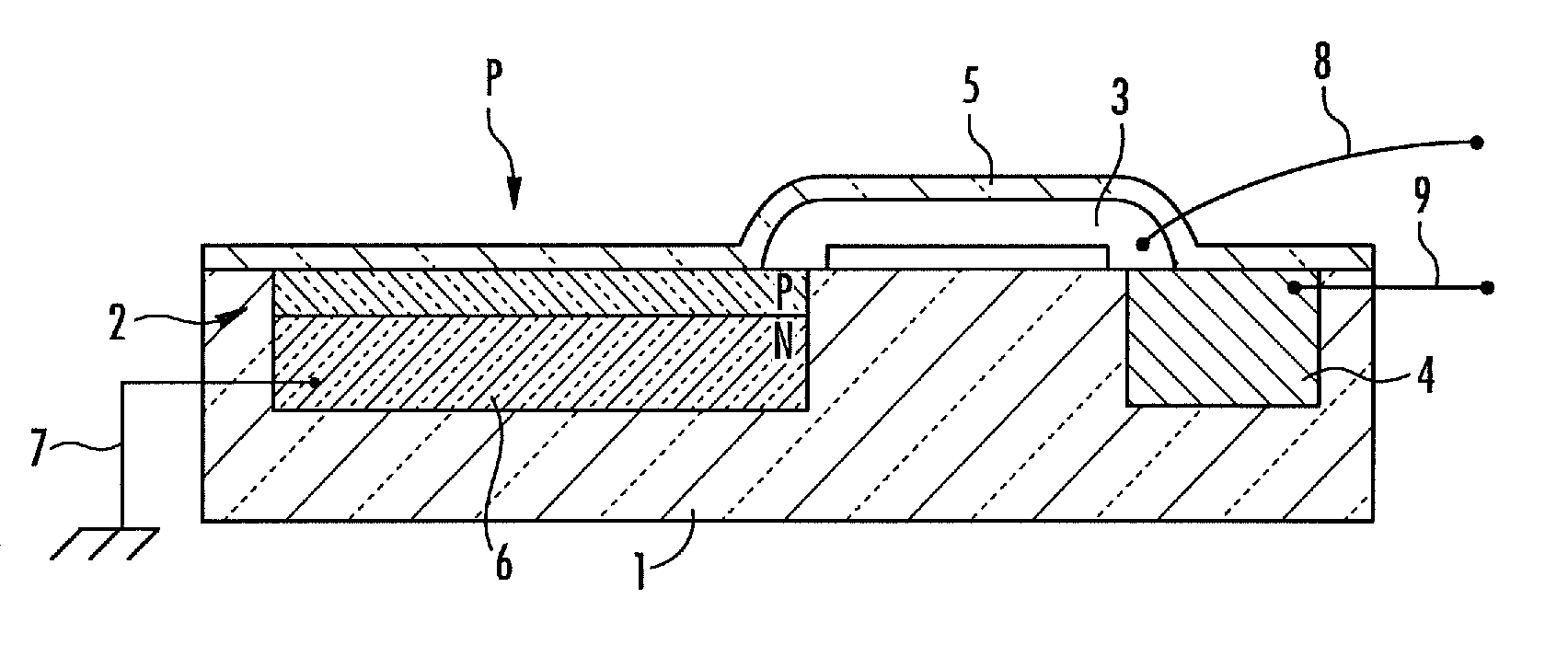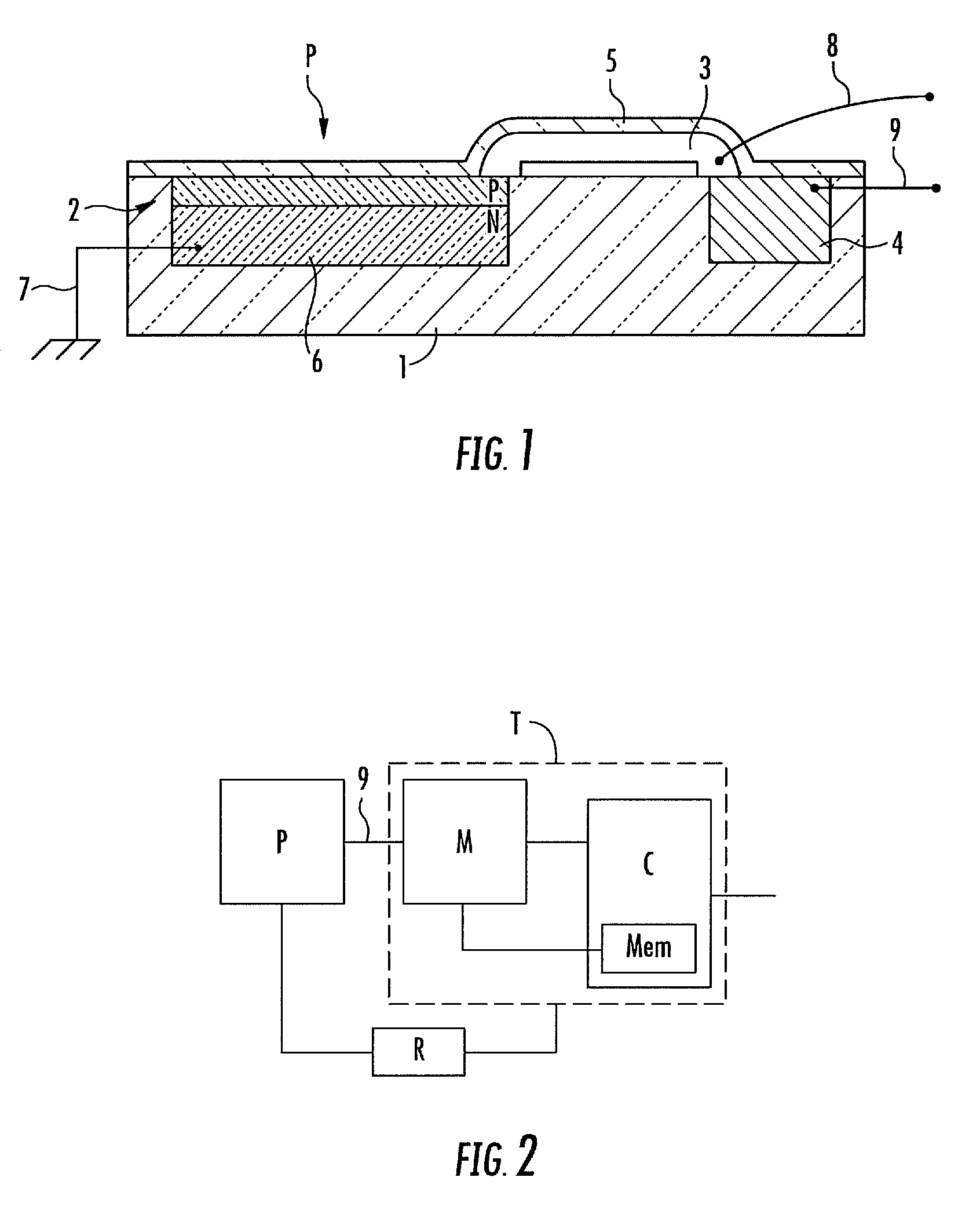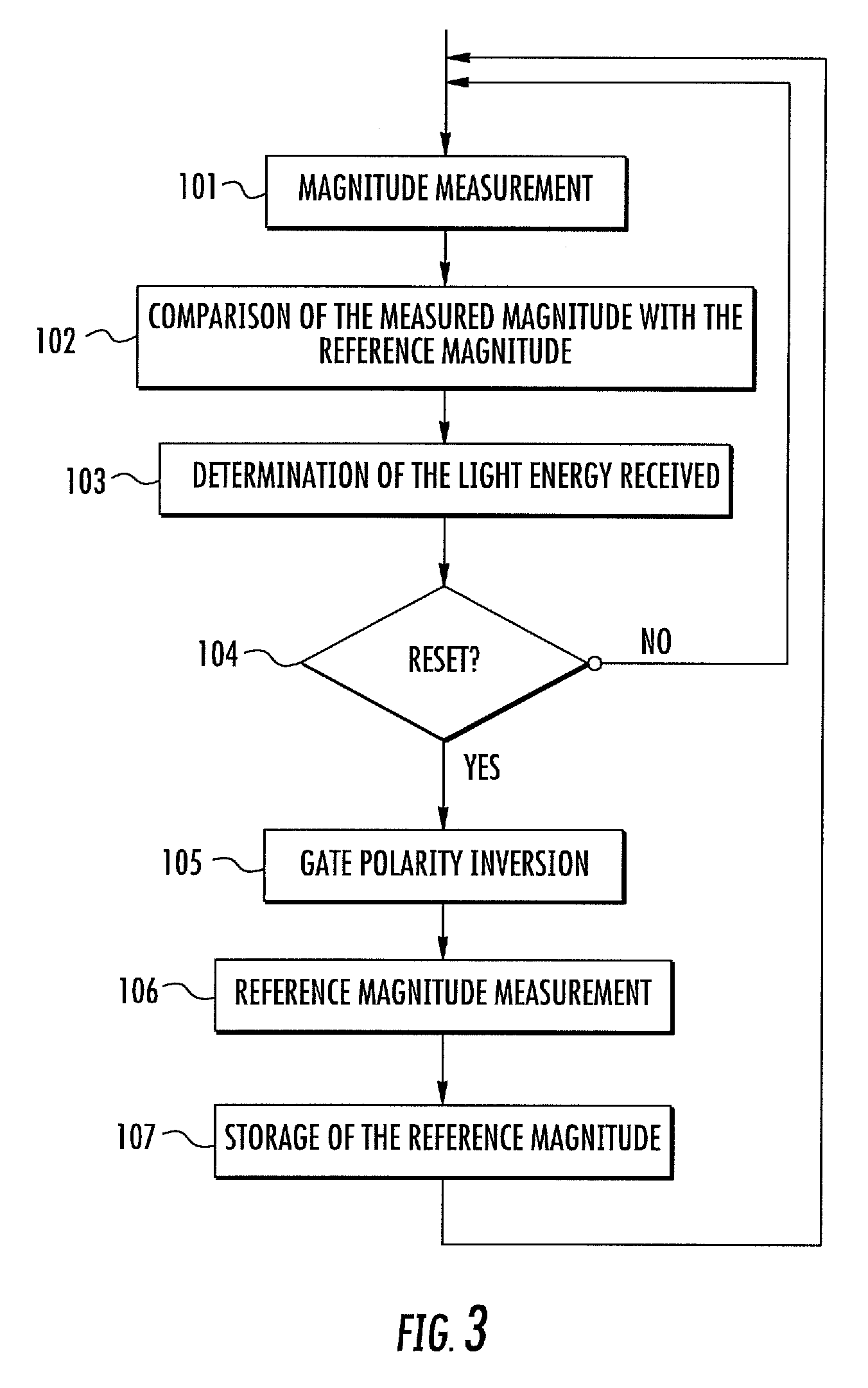Device and method for measuring light energy received by at least one photosite
a technology of light energy and photosites, applied in the field of imaging devices, can solve the problems of reducing the input resistance of the transistor, affecting the sensitivity of the light energy measurement device, so as to achieve the effect of increasing the sensitivity
- Summary
- Abstract
- Description
- Claims
- Application Information
AI Technical Summary
Benefits of technology
Problems solved by technology
Method used
Image
Examples
Embodiment Construction
[0022]FIG. 1 shows a pixel P of a device for measuring energy received by the pixel P according to one embodiment. The pixel P formed in a semiconductor substrate 1 comprises a photodiode 2 comprising at least one p-n junction, a transfer transistor 3, and a reading node 4.
[0023]The transfer transistor 3 is coupled on the one hand to the photodiode 2 and on the other hand to the reading node 4. The transfer transistor 3 is encapsulated in a layer 5 of hydrogenated amorphous silicon. This layer 5 of hydrogenated amorphous silicon may cover the entire surface of the pixel P or just part of the gate of the transfer transistor 3.
[0024]The photodiode 2 comprises a charge storage region 6 able to store the charge created via the photoelectric effect in the photodiode. The current created by this charge is removed by grounding the charge storage region 6 via an electrical connection 7, such as a metal contact.
[0025]The gate of the transfer transistor 3 is coupled via an electrical connecti...
PUM
 Login to View More
Login to View More Abstract
Description
Claims
Application Information
 Login to View More
Login to View More - R&D
- Intellectual Property
- Life Sciences
- Materials
- Tech Scout
- Unparalleled Data Quality
- Higher Quality Content
- 60% Fewer Hallucinations
Browse by: Latest US Patents, China's latest patents, Technical Efficacy Thesaurus, Application Domain, Technology Topic, Popular Technical Reports.
© 2025 PatSnap. All rights reserved.Legal|Privacy policy|Modern Slavery Act Transparency Statement|Sitemap|About US| Contact US: help@patsnap.com



